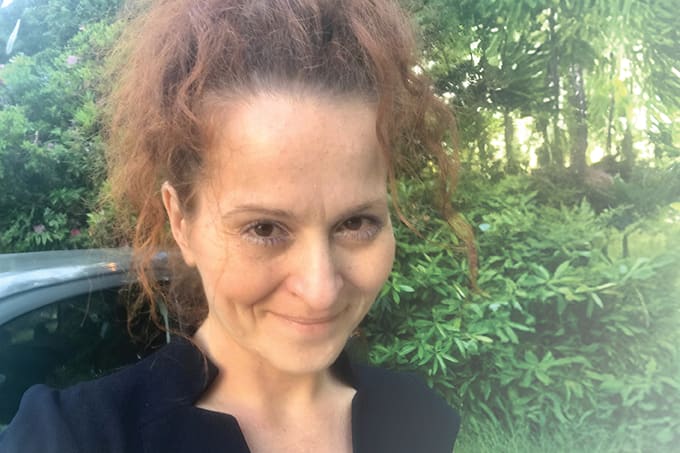Pathology practice in a resource-limited setting has always been a mix of clinical judgment, patience, and resourcefulness. In The Philippines, we work mostly in government hospitals where the caseload is relentless, and biopsies come in often from across different regions. Some are routine, others unusual, and some cases can stop you in your tracks. The difficulty isn’t always in the diagnosis itself, but in the limitations we have to work around – access to molecular panels, limited IHC stains, aging laboratory equipment, and scarce opportunities for subspecialty input. We’re expected to deliver the same accuracy and efficiency as more advanced centers, but with far fewer tools.

It’s in this context that I started exploring AI tools almost by accident. Like many of my colleagues, I had first dismissed artificial intelligence in medicine as futuristic or overhyped. Perhaps it had some use in places like the US or UK, where digital pathology and whole-slide imaging are already the norm, I thought.
Then, one day, overwhelmed by a difficult case and working against the clock, I uploaded a summary and a few histology photos to ChatGPT. The response stunned me – not because it handed me a perfect diagnosis, but because it instantly organized the data, synthesized clinical clues, and laid out a differential that made sense.
More than anything, it gave me momentum. That single interaction shifted my thinking that maybe AI wasn't a luxury for high-income countries. It could be a lifeline in places like ours.
Putting AI through its paces
In one memorable case, I received a mediastinal mass from a middle-aged male patient. The histologic picture was ambiguous. The architecture wasn’t typical of thymoma, lymphoma was possible, but nothing was definitive. We didn’t have a thoracic pathologist around, and access to advanced stains was limited. I turned to ChatGPT, feeding in the histologic features, available immunohistochemistry, and imaging clues. The result was a structured differential, highlighting rare thymic lesions and correlating clinical presentations. It even suggested a minimal panel of IHC stains that respected our limitations. It didn’t replace my role as the pathologist. It simply cleared the fog, helped me focus, and gave me back precious time.
Around the same time, I began using Pathtalk.io, a digital tool that applies AI-based search functions to pathology-related queries. While it does not analyze slides or offer diagnostic decisions, I found it useful for quickly locating reference materials specific to the field. Compared to general-purpose search engines, it provides a more targeted starting point when reviewing differential diagnoses or rare entities. In a setting where access to updated literature is often limited, such tools can help streamline background research without replacing formal consultation or peer-reviewed verification.
Of course, none of this solves everything. AI tools are not infallible. They don’t peer into a microscope. They don’t sign out reports. They don't share the weight of our professional accountability. But they are fast becoming powerful companions by speeding up literature searches, suggesting next steps, or pointing you to rare but crucial data you might have missed. In a workplace where the pressure to shorten turnaround times grows even as the case volume continues to rise, that kind of support matters.
Part of the workflow
Yet for all the optimism, there are still barriers to accessibility and sustainability that we need to overcome. While ChatGPT, for instance, is increasingly user-friendly, full access to its more advanced version requires a paid subscription – something not all public hospital pathologists can justify. Internet bandwidth is another issue, with slow or unstable connections rendering even the most elegant tools useless.
In addition, there’s a need for training as not everyone is familiar with prompting effectively or discerning when to use AI versus when to rely on old-school intuition. What would truly make a difference is institutional support. Hospitals must embrace these tools, offering access and orientation, and integrating AI-assisted decision support into continuing medical education. AI doesn't need to be the centerpiece, it just needs to be a subtle, accessible, and reliable part of the workflow.
Better for everyone
Beyond convenience, the implications for patient care are significant. In resource-limited settings, diagnostic accuracy can vary not because of incompetence, but because of insufficient support. Rare tumors may be misclassified, poorly differentiated cancers may be under-characterized, and borderline lesions may be over- or underdiagnosed due to lack of tools. AI helps even the playing field. It allows a pathologist in a provincial or district hospital to access the same thought pathways, literature references, and diagnostic frameworks as their counterparts in more resourced institutions.
That kind of confidence trickles down from the clinical laboratory to the clinician and to the patient. A timely diagnosis means earlier treatment. A better referenced report gives the oncologist more clarity. A correctly classified tumor can spare a patient unnecessary surgery or direct them toward more targeted therapy. In this way, AI may not only improve efficiency. It could actually save lives.
There’s still a long way to go. We need better infrastructure, more localized AI models, and real policy support to embed these tools in our public health systems. Artificial intelligence is not here to take away our jobs. It’s not trying to out-think the human mind or override decades of pathology training. It is here to amplify us – especially those of us working quietly, often alone, behind microscopes in underfunded corners of the healthcare system. It brings knowledge to our fingertips, reassurance when we need a second opinion, and structure when our time is short.
In resource-limited settings, where the need for quality diagnostics is still overwhelming, tools like ChatGPT and Pathtalk.io are not merely technological trends but also practical allies. They represent the possibility that with the right support and a bit of curiosity, a pathologist in a modest laboratory can still deliver world-class care. And that’s a future worth investing in.




